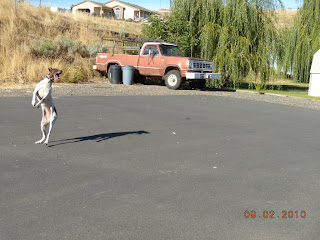 | |
| The Julian and Junius Dobson Farms, 1922. Note house, barn and fruit trees in center of picture. |
I have just finished re-reading the contest entries published in The Farmer's Wife Sampler Quilt by Laurie Aaron Hird. The contest was announced by the editors of "The Farmer's Wife" magazine in January 1922 and closed March 1, 1922. Over 7,000 readers responded to the question "Do you want your daughter to marry a farmer?" The prizes were $200 for first, $100 for second, $50 for third. An additional $150 was divided among another 65 respondents, making 68 winners in all. The excerpts published in this book are selections from the 65 winning entries. The top entries can be read online at http://thefarmerswifequilt.blogspot.com/. Here are some of the common ideas I noted with this reading:
- Partnership with husband in building not only a home but a business
- Family togetherness
- Hard but satisfying work -- contributes to self respect
- The independence of working for themselves, the farmer being his own man or boss, an opportunity not available elsewhere.
- Financial independence for the wife herself, earned by selling eggs, milk, and produce. And – one added that the clever housewife will find means to save from the household budget for extras.
- Quietude for the nurturing of spirituality and independent thought plus an environment for building good character
- Some said that their homes had as many conveniences, good books, and cultural opportunities as those of the city, with the added benefits of living away from city temptations, one such influence being the movies.
- Living close to nature and the beauty of the country
- One wife said she loved the privacy: when she hung a late wash on the line, there were no prying eyes to judge. She also said she appreciated the privacy when the stork was making a visit.
- At least one respondent mentioned she could go to the city any time she wanted – and "flivver" herself there.
- Some said they enjoyed living away from the frivolity of fashion, while others said they could sew stylish clothing for the family.
- Many addressed the matter of modern conveniences, stating that they had all the labor-saving devices of the day within their homes.
Only a few hint that the farmer should be the right sort of man. It seems to be understood that a farmer just is the right sort of man.
"The country has now so many advantages copied from the city – telephones, electricity, running water, furnaces, autos, and so forth. Few are the farmers who do not have some or all of these conveniences," wrote a farm wife from Chatauqua County, New York. "I believe that farmers, as a class, have only just begun to realize some of the good things that the future has in store for them," the same writer added.
In my reading of The Farmer's Wife Sampler Quilt, I noted only one letter that hinted at future difficulties for the farmer. From Franklin County, Ohio, a respondent wrote, "We all realize the farmer is facing the darkest hour in the history of our nation, but behind this cloud we see him coming into his own in Congress, and with the backing of the Farm Bureau, he will keep it. This forecasts the brightest future agriculture has ever seen. The right kind of prices and markets must and will come. But even times of depression can not materially affect the farmer's living as they do the city man's, for he has his food from his own soil, vegetables, fruits, grains, milk and meats . . . " KW


































